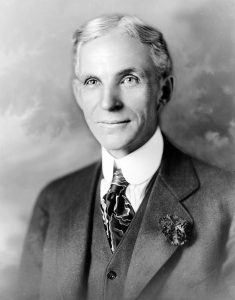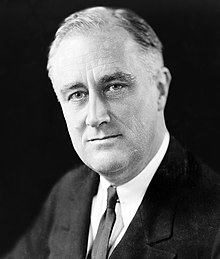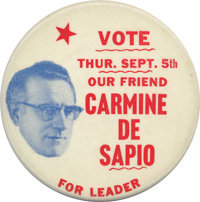Part One
SETTING THE STAGE
This is about the end of political parties as we know them, the reasons why and the realization that the years ahead represent a genuine challenge to something unique in World history.
America’s system of government – by and for the people – which was startling when it was established, exceptional as it developed great strength through an economy and a system of public education unknown before in history, is now facing challenges it has never known before.
While once trouble came from foreign sources diametrically opposed to American democracy, now the most serious challenges are clearly self-made right here at home.
To understand what has happened, we can look to the essential meaning of modern political parties, the changes that have taken place and what might be ahead.
POLITICS AS POWER
The foundation of America’s overpowering strength in the 20th Century- America’s Century – came as the result of astounding achievements in the industrialization of this country during the latter part of the 19th Century. With the development of a nationwide railway system, the steel industry, the automobile, the influence and breadth of electricity, the concept of mass manufacturing through the assembly- line system and a welcoming approach to white immigration from Europe, the foundation of America’s rising power was set.
All the elements of a successful top-down Capitalistic economy existed. The Robber Barons who developed these systems had the money, cheap and plentiful labor, total monopolies and perhaps most importantly, the ”purchased cooperation” of a political system and government primed to do exactly as they wanted: a free-market system with very little regulation

By then the influence of the modern political party and what that would do to government policies was in full flight.
Political parties operated at the street level. Even as the idea of unions representing worker’s rights was being fiercely contested, local political parties were able to find jobs for people. If you spent a little time volunteering on Election Day, you could go to a party leader and get help finding a job.
And if you then voted the way that leader demanded, a job could be yours.
The Democratic Party excelled at this form of party-building.
It presented itself as the party of working people concerned about opportunities for those who sought them. It talked of a justice system designed to help people. It projected a government able to provide better lives.
The Republican Party, on the other hand, saw politics as the way to developing the kind of economy it saw as “the American way” … government would protect free market development; an unregulated market with few government controls…a marketplace able to take care of business as it chose; a market which in the best tenets of a Capitalist system saw success in profit not people.
The Republican Party fought the right of workers to organize for better working conditions and pay. And a war it was with management hiring a private police force – the Pinkertons – to use guns with real bullets in the fight against union organizing and the right to strike.
The Republican Party gave the Robber Barons what they wanted at the height of their power in the first quarter of the 20th Century. It was a government headed by President Herbert Hoover (a car in every garage, a chicken in every pot); a government with limited regulation that contributed to the Stock Market collapse, caused mass unemployment and took the American economy down with it.

The New Deal had already turned the Federal Government into an employer as never before in our history. Work was found for unemployed millions in all sorts of ways: farmers expanded crops, laborers built highways, actors and writers worked to bring entertainment to a hard-pressed nation.
And so Roosevelt made certain everyone made money during the war effort. The corporations, the workers including women and blacks…everyone worked…everyone made money in a stunning display of management and labor cooperation…making America a monolith of production unknown in World history that would last far beyond the successful war effort.
And after the war that liberal approach to cooperation – decent wages and a sense of working for a concerned company – built the middle class…working people who could afford to own a home and send their children to college.
Roosevelt, who was able to use many Republican-based program ideas to support his New Deal “radicalism” was hated by Republicans but they were unable to stop him from serving an unprecedented four terms.
Under his banner the national Democratic Party was secure even when they couldn’t always control the Legislative branch.
NEW YORK POLITICS
The Democratic Party held forth in New York City in the last decades of the 19th Century and well into the 20th Century. The enormous Irish and then Italian immigration coming to America “where the streets were paved with gold” was critical to the Democratic Party’s success.
The existence of Irish gangs (the Westies) saw controlling the Democratic Party as the way to help those who found no gold in those streets and needed assistance just to live. The value of ‘owning” a political party and providing services to those people who would join, be available and take direction when it came time to voting became obvious.
 The Italian mob which followed them under the leadership of Carmine DeSapio made Tammany Hall the epitome of political control and influence…all based on power, corruption and connections. If the Westies showed them how to control votes, DeSapio used the Democratic Party to control the corporations by supporting the development of unions throughout all industries in New York: the garment, construction, government workers and teachers among the most important.
The Italian mob which followed them under the leadership of Carmine DeSapio made Tammany Hall the epitome of political control and influence…all based on power, corruption and connections. If the Westies showed them how to control votes, DeSapio used the Democratic Party to control the corporations by supporting the development of unions throughout all industries in New York: the garment, construction, government workers and teachers among the most important.
It was in the mid 40’s that Roosevelt came back to New York to form the Liberal Party, an independent political group that would support his effort to win a fourth term against his own Democratic Vice President, Henry Wallace.
The Liberal Party would become New York’s first “third party” and use its involvement with liberal forces in New York State to rid the Democratic Party of Carmen DeSapio and Tammany Hall and to become a haven for liberal Republicans to try to change Republican Party policies. Those New York liberal Republicans found influence throughout the country and for a number of years became a minor force in the Republican Party.
The Republican Party settled into upstate New York…starting with NYC suburbs and going throughout the State coming to control the State Senate as the Democrats controlled the State Assembly.
And then a series of cultural and political situations occurred which began to eat away at the influence and worth of both major political organizations.
Television coverage of Presidential elections, the Voting Rights Act, the development of the contraceptive PILL and the Vietnam War all contributed to the change.
When the explosions and disruptions caused by these political events were finished by 1980, America saw the end of the New Deal and the return of big business control as social capitalism disappeared with the appearance of Barry Goldwater and Ronald Reagan.
End of Part One…..

“contraceptive PILL”
How did this “eat away at the influence and worth of both major political organizations”?
March 1, 2021
Good article about politics and power. I am, however, somewhat more optimistic in that we may be seeing the beginnings of a political party re-alignment in this country. Nearly 160,000,000 Americans participated in last fall’s Presidential election, a modern day record for voter participation (one has to go back to the early 20th century for a comparable turnout level). Since the fall election and the tragic events of January 6, 2021, many, many Republicans have left the GOP nationwide to become Democrats or Independents. You may very well see a new 3rd party emerging of centrist Republicans. I would support a measure advanced by the Ripon Society and other good government groups to allow independent voters (who according to polls, comprise up to 40% of American voters) to vote in party primaries for public offices.
So I’m not ready to throw in the towel.
Keep the faith!
Professor Stephen R. Rolandi
Larchmont, New York